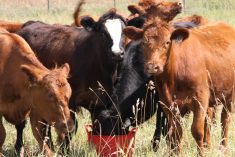Foot rot is a common diagnosis when an animal is limping but it may not be the correct one.
“Every lame calf, the producer always says it has foot rot. In all reality, a lot of them are not foot rot, it is something else,” says veterinarian Roy Lewis.
Producers should lift the foot and have a look because the cause could be something else, like digital dermatitis or an injury. It may not require an antibiotic but it may need a pain killer to help it heal faster.
Read Also

Animal protection delivery to change in Saskatchewan
The Saskatchewan government is looking for a new agency to handle animal welfare after Animal Protection Services of Saskatchewan decided not to renew its contract next year.
Starting this year, a collaborative research project is evaluating feedlot calves for lameness.
“People are used to foot rot and 75 percent of the time it is foot rot,” said veterinarian Karin Orsel.
However, digital dermatitis, also known as strawberry foot rot or hairy heel warts, is on the rise in feedlots.
Lameness may result in costly treatments and premature slaughter, she said at the University of Calgary veterinary summit held June 19-21.
“It is really worth it to allocate resources to deal with lameness, to be on the ball when lameness is likely to occur and intervene as soon as possible to have the most effect of your recovery,”
“Once you have chronic lameness, it is difficult to get a positive return from that animal.”
Digital dermatitis presents itself in various ways so researchers will be working in four feedlots to observe cattle and collect samples to discover which disease is present and which bacteria are responsible.
The disease starts with a small lesion and heals but it may flare up with different degrees of severity. It is painful and infectious.
Data collected from dairy cows show they can have severe sores and not look lame and vice-versa.















